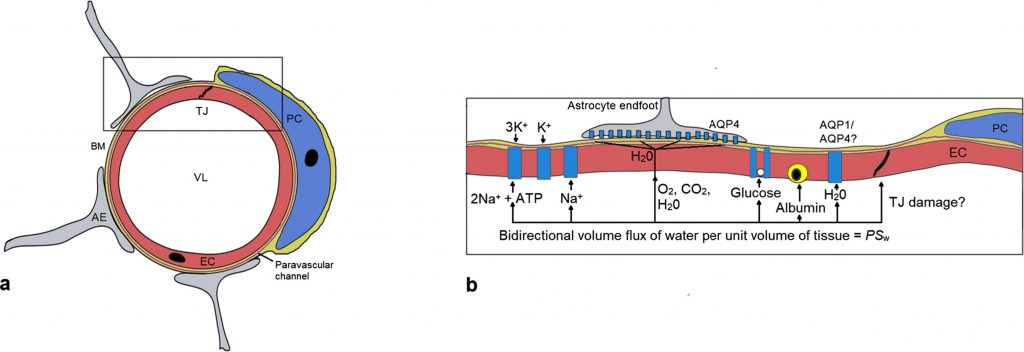
Measuring water exchange across the blood-brain barrier using MRI
Ben R Dickie, Geoff JM Parker, Laura M Parkes, ‘Measuring water exchange across the blood-brain barrier using MRI’ Progress in Nuclear Magnetic Resonance Spectroscopy [2019].
The blood-brain barrier (BBB) regulates the transfer of solutes and essential nutrients into the brain. Growing evidence supports BBB dysfunction in a range of acute and chronic brain diseases, justifying the need for novel research and clinical tools that can non-invasively detect, characterize, and quantify BBB dysfunction in-vivo. Many approaches already exist for measuring BBB dysfunction in man using positron emission tomography and magnetic resonance imaging (e.g. dynamic contrast-enhanced MRI measurements of gadolinium leakage). This review paper focusses on MRI measurements of water exchange across the BBB, which occurs through a wide range of pathways, and is likely to be a highly sensitive marker of BBB dysfunction. Key mathematical models and acquisition methods are discussed for the two main approaches: those that utilize contrast agents to enhance relaxation rate differences between the intravascular and extravascular compartments and so enhance the sensitivity of MRI signals to BBB water exchange, and those that utilize the dynamic properties of arterial spin labelling to first isolate signal from intravascular spins and then estimate the impact of water exchange on the evolving signal. Data from studies in healthy and pathological brain tissue are discussed, in addition to validation studies in rodents.
Read the full article here.






0 Comments